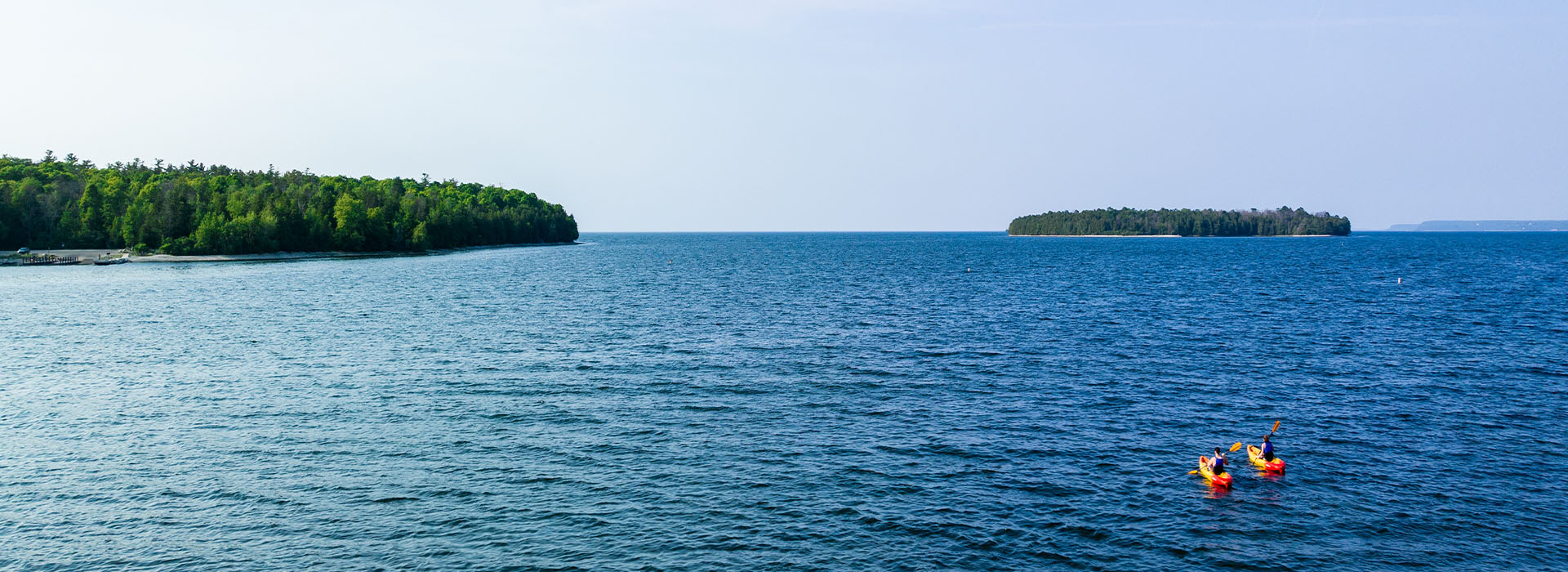
Door County Safety Tips
Water Safety Tips
General Water Tips
- Check the weather. It may look sunny and calm, but wind can pick up and storms roll in with little visible warning. Check what’s in the forecast for the next several hours, specifically wind condition and waves, but also water temperature. The waters of Lake Michigan, especially off the peninsula’s eastern shore, can be chilly even in mid-summer.
- Make a plan. Anytime you head out on the water, let someone know you are heading out, and when you expect to be back on shore, and let them know you’ll contact them when you’re there. Tim Pfleiger of Door County Adventure Center said your float plan should Include how many people are in the party, color of vessels and color of personal flotation devices. He also suggests putting a copy of the float plan in the windshield of your vehicle.
- Go with someone. This isn’t always possible, but if you have the option, go out with a friend.
- Wear your safety vest. Don’t ditch it on shore, don’t just bring it with you. You won’t have a chance to put it on if disaster strikes. Wear a properly fitted Coast Guard-approved personal flotation device. Pack your personal gear, such as your cell phone, in a waterproof bag and tie it to your boat so you don’t lose it if you capsize.
- Bring a signaling device such as a whistle, flashlight or cell phone.
- Know your craft. Not all kayaks are meant for big water or bad weather. Learn the limitations of your kayak, canoe, or boat. Pfleiger provides an example: “If you’re paddling a traditional kayak that requires a spray deck, then you should have a spray deck on it so the water doesn’t come into your cockpit and cause instability and possible capsizing.”
- Stay near shore. Lake Michigan is BIG water. Keep the shore in sight at all times. Even a little wind can create wave action that makes it difficult to get back to shore, and bad weather can quickly make it difficult to navigate and find your bearings on the water.
Water Emergency Tips from the U.S. Coast Guard
- If you can’t get to shore or back in your kayak, do not swim because you will lose body heat even faster. Floating in your PFD is your best bet.
- In 70-degree water, you can survive for about 18 hours while floating with a PFD, or for about 13 hours treading water.
- In 55-degree water, the survival window is 3.5 hours floating in a PFD, three hours treading water, and two hours swimming.
- In 35-degree water, the survival window is less than two hours floating in a PFD, one hour and 25 minutes treading water, and about 45 minutes swimming.
- If you are wearing a PFD, bring your knees to your chest to try to contain body heat. If you are with others, huddle together to save heat. If you are wearing a Type 3 life vest, do not draw up your knees. Instead, keep your legs together and arms at your side while leaning back to keep your face out of the water.
Paddling Safety Tips
- In the spring and early summer, water temperatures on Lake Michigan are extremely cold and even dangerous. If you plan to head out on the big lake, be sure you are properly prepared with the correct equipment and experience.
- Always put the safety of yourself and others ahead of the experience. In the summer the water and weather on the lake can be unpredictable. If you are not an experienced sea kayaker, your best option is to hire one of Door County’s amazing guides.
- Even if you are sticking to inland waters, taking precautions and planning is still important.
- Make sure that you check weather conditions. While the morning may be sunny and calm, the weather might roll in later in the day. Bring layers and be prepared for changing weather.
- No matter where you are paddling, make sure you tell someone your plans and check in with them when you’re back on the shore. This step can be lifesaving in an emergency and will help ensure emergency services can be notified promptly.
- Finally, always wear a life jacket. Always.
Fire Safety Tips
Before having a fire, always check that fires are allowed.
The Wisconsin DNR will put fire restrictions in place when conditions are not safe for any type of burn. Check this link after 11 a.m. to be sure that you can have a fire. Even if restrictions are not in place, think twice before having a fire in hazardous conditions such as high winds. Always obtain a free permit where required.
Be mindful of what you burn.
While it may be tempting to use your fire as a trashcan, harmful toxins such as lead are released into the air when you burn trash. Refrain from burning leftover food as it can attract animals and serves as an unhealthy food source for wildlife. Instead, throw trash and food away, or consider composting if you are able.
Keep your fire small and manageable.
No matter if you are having a campfire, bonfire, or debris burn, keeping your flames low is an important step to having a responsible fire. This will help ensure you are easily able to burn all wood to ash and lessen the chance of a fire getting out of control.
Make sure fires are all the way out before leaving them.
A majority of wildfires in the US are caused by fires being left unattended. Burn wood and debris all the wash to ash and dowse it with 3-4 gallons of water until it cools to the touch before leaving your fire. Even the slightest gust of wind can reignite fires, potentially starting a wildfire if they are not properly extinguished.

Discover Door County
Destination Guide
Newsletter


